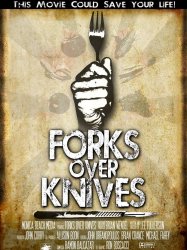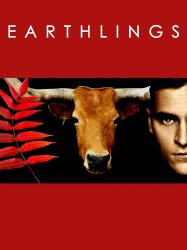Films with theme "Documentary films about animal rights", sorted by revenue

Food, Inc. (2008)
, 1h34Directed by Robert Kenner
Origin USA
Genres Documentary
Themes Films about animals, Cooking films, Environmental films, Medical-themed films, Obésité, Documentaire sur la cuisine, Documentary films about business, Documentary films about animal rights, Documentary films about law, Documentary films about environmental issues, Documentaire sur la malbouffe, Documentary films about health care, Films about disabilities, Political films, Documentary films about nature
Le film s’inspire de l’essai Fast Food Nation d’Eric Schlosser. Il traite de la production de nourriture à grande échelle aux États-Unis et conclut que la viande et les légumes produits par ce type d’industrie sont mauvais pour la santé et pour l’environnement malgré les messages et l'imagerie présents sur les emballages des aliments. Pour cela l'enquête s'attache sur l'élevage industriel de bovins et d'ovins en interrogeant des éleveurs enchaînés à leurs emprunts dans le but de suivre le cahier des charges des grandes firmes agroalimentaires comme Cargill ou Smithfield Foods ainsi que sur le rôle prépondérant du maïs la plupart du temps maïs génétiquement modifié dans la composition de la quasi-totalité des produits vendus en supermarché aux Etats-Unis et ailleurs dans le monde. Le témoignage d'une mère devenue défenseuse des droits des consommateurs à la suite du décès accidentel de son fils, Kevin Kowalcyk, empoisonné par la bactérie Escherichia coli après avoir mangé un hamburger apporte un argument supplémentaire. Cette famille a obtenu gain de cause avec l'adoption de la Kevin's Law.

Blackfish (2013)
, 1h24Origin USA
Genres Documentary
Themes Films about animals, Environmental films, Seafaring films, Politique, Transport films, Documentary films about animal rights, Documentaire animalier, Documentary films about law, Documentary films about environmental issues, Mise en scène d'un poisson, Political films, Documentary films about nature, Mise en scène d'un cétacé
Actors James Earl Jones, Whoopi Goldberg, Anderson Cooper
The documentary focuses on the captivity of Tilikum, an orca involved in the deaths of three individuals, and the consequences of keeping orcas in captivity. The coverage of Tilikum includes his capture in 1983 off the coast of Iceland, and purported harassment by fellow captive orcas at Sealand of the Pacific, incidents that Cowperthwaite argues contributed to the orca's aggression and includes testimonial from Lori Marino, Director of Science with the Nonhuman Rights Project. Cowperthwaite also focuses on SeaWorld's claims that lifespans of orcas in captivity are comparable to those in the wild, typically 30 years for males and 50 years for females, a claim the film argues is false. Interview subjects also include former SeaWorld trainers, such as John Hargrove, who describe their experiences with Tilikum and other captive whales.

The Cove (2009)
, 1h27Origin USA
Genres Documentary, Crime
Themes Films about animals, Environmental films, Seafaring films, Transport films, Cétacé, Documentary films about animal rights, Documentary films about law, Documentary films about environmental issues, Political films, Documentary films about nature, Mise en scène d'un cétacé
Actors Hayden Panettiere, Isabel Lucas, Louie Psihoyos
The film follows former dolphin trainer and activist Ric O'Barry's quest to document the dolphin hunting operations in Taiji, Wakayama, Japan. In the 1960s, O'Barry helped capture and train the five wild dolphins who shared the role of "Flipper" in the hit television series of the same name. The show, very popular, fueled widespread public adoration of dolphins, influencing the development of marine parks that included dolphins in their attractions. After one of the dolphins, in O'Barry's opinion, committed a form of suicide in his arms by closing her blowhole voluntarily in order to suffocate, O'Barry came to see the dolphin's captivity and the dolphin capture industry as a curse, not a blessing. Days later, he was arrested off the island of Bimini, attempting to cut a hole in the sea pen in order to set free a captured dolphin. Since then, according to the film, O'Barry has dedicated himself full-time as an advocate on behalf of dolphins around the world.

Forks Over Knives (2011)
, 1h36Origin USA
Genres Documentary
Themes Films about animals, Cooking films, Environmental films, Documentaire sur la cuisine, Documentary films about animal rights, Documentary films about law, Documentary films about environmental issues, Documentaire sur la malbouffe, Documentary films about health care, Political films, Documentary films about nature
À travers un examen des carrières du médecin américain Caldwell Esselstyn et du professeur de biochimie nutritionnelle T. Colin Campbell , Forks over Knives suggère que « l'évolution de beaucoup, sinon toutes, les maladies dégénératives qui nous affligent peut être contrôlée, voire inversée, en rejetant notre alimentation actuelle basée sur les aliments transformés et d'origine animale. » Il fournit aussi une vue d'ensemble du projet China-Cornell-Oxford, long de 20 ans, qui mena aux trouvailles du professeur Campbell, esquissé dans son livre, The China Study (2005). Il y suggère que maladie cardiaque, diabète, obésité, et cancer peuvent être liés au régime alimentaire occidental d'aliments transformés et d'origine animale (y compris les produits laitiers).

Project Nim (2011)
, 1h33Directed by James Marsh
Origin United-kingdom
Genres Documentary
Themes Films about animals, Environmental films, Documentary films about animal rights, Documentaire animalier, Documentary films about law, Documentary films about environmental issues, Films about apes, Political films, Documentary films about nature, Mise en scène d'un mammifère
The film focuses on Project Nim, a research project that was mounted to determine whether a primate raised in close contact with humans could develop a limited "language" based on American Sign Language. The project was centred on a chimpanzee named Nim Chimpsky.

Earthlings (2005)
, 1h35Origin USA
Genres Documentary
Themes Films about animals, Environmental films, Politique, Documentary films about animal rights, Documentaire animalier, Documentary films about law, Documentary films about environmental issues, Documentary films about health care, Political films, Documentary films about nature
Actors Joaquin Phoenix
Covering pet stores, puppy mills, and animal profession, Earthlings includes footage obtained through the use of hidden cameras to chronicle the day-to-day practices of some of the largest industries in the world, all of which rely on animals. It draws parallels between racism, sexism, and speciesism.

Sharkwater (2006)
, 1h29Directed by Rob Stewart
Origin Canada
Genres Documentary
Themes Films about animals, Environmental films, Seafaring films, Politique, Transport films, Films about sharks, Documentary films about animal rights, Documentaire animalier, Documentary films about law, Documentary films about environmental issues, Mise en scène d'un poisson, Political films, Documentary films about nature
Actors Trey Parker, Matt Stone, Rob Stewart
Depuis l'enfance, Rob Stewart se passionne pour les requins. À tel point qu'il est devenu biologiste et photographe sous-marin afin de pouvoir nager avec eux, décrypter leur mystère et déconstruire le mythe du requin mangeur d'hommes. Ce mythe, entièrement fabriqué, serait selon lui responsable de l'indifférence qui entoure, un peu partout dans le monde, le massacre de la population de requins à des fins commerciales. Du Costa Rica aux Îles Galapagos en passant par le Guatemala, Stewart et l'équipage de l'activiste des mers Paul Watson tentent de dénoncer et de mettre en échec les braconniers à la solde de mafias asiatiques soutenues par des gouvernements corrompus. Il y va de l'équilibre écologique de la planète.

Blood of the Beasts (1949)
, 21minutesDirected by Georges Franju
Origin France
Genres Documentary, Horror
Themes Films about animals, Environmental films, Politique, Films about the labor movement, Documentary films about animal rights, Documentaire animalier, Documentary films about law, Documentary films about environmental issues, Documentaire sur le monde du travail, Political films, Documentary films about nature
Actors Georges Hubert, Nicole Ladmiral
Franju's film contrasts peaceful scenes of Parisian suburbia with scenes from a slaughterhouse. The film documents the slaughtering and butchering of horses, cattle, and sheep. The film is narrated without emotive language.

The Animals Film (1981)
, 2h16Origin United-kingdom
Genres Documentary
Themes Films about animals, Environmental films, Documentary films about animal rights, Documentary films about law, Political films, Documentary films about nature
Actors Julie Christie, Sandy Dennis
The Animals Film presents a survey of the uses of animals in factory farming, as pets, for entertainment, in scientific and military research, hunting, etc. The film also profiles the international animal rights movement. The film incorporates secret government footage, cartoons, newsreels and excerpts from propaganda films.

Unnecessary Fuss (1984)
, 26minutesOrigin USA
Genres Documentary
Themes Films about animals, Environmental films, Documentary films about animal rights, Documentary films about law, Documentary films about politics, Political films, Documentary films about nature

A Cow at My Table (1998)
, 1h30Directed by Jennifer Abbott
Origin Canada
Genres Documentary
Themes Films about animals, Environmental films, Documentary films about business, Documentary films about animal rights, Documentary films about law, Documentary films about environmental issues, Documentary films about politics, Films about cows, Political films, Documentary films about nature

Shores of Silence (2000)
Directed by Mike Pandey
Themes Films about animals, Environmental films, Films about sharks, Documentary films about animal rights, Documentary films about law, Documentary films about environmental issues, Political films, Documentary films about nature

The Witness (2000)
, 43minutesOrigin USA
Genres Comedy, Action
Themes Films about animals, Environmental films, Documentary films about animal rights, Documentary films about law, Political films, Documentary films about nature
Actors Christopher Heyerdahl, Patrick Thomas, Susie Almgren, John Heard, Daniel Pilon
The film begins with scenes showing the day-to-day life of a construction contractor by the name of Eddie Lama. Footage shows Lama discussing a construction job with one of his employees, and Lama also talks about how various different racial and ethnic groups who work at his firm are able to get along together. A scene is shown with Lama petting two dogs, and there is also footage showing that Lama keeps multiple cats in his office.

Go Further (2003)
, 1h20Origin Canada
Genres Documentary
Themes Films about animals, Environmental films, Documentary films about animal rights, Documentary films about law, Documentary films about environmental issues, Documentary films about health care, Documentary films about technology, Political films, Documentary films about nature
Actors Woody Harrelson

Shelter Dogs (2003)
, 1h14Directed by Cynthia Wade
Origin USA
Genres Documentary
Themes Films about animals, Environmental films, Documentary films about animal rights, Documentary films about law, Political films, Documentary films about nature
Thousands and thousands of stray and unwanted dogs are born into the world everyday. When these animals have nowhere to go and no one to care for them, it becomes a situation that society needs to make a decision about. Animal shelters have become one solution for the issue of these homeless animals, but then the question becomes, what do we do with them then? This question is controversial, in that not all of them can be adopted. As a result many animals are euthanized, a fate extremely controversial in itself.
 Connection
Connection